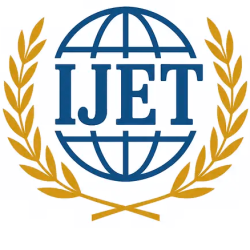
Intelligent Waste Sorting: An AI-Powered Approach to Sustainable Waste Management – Volume 11 Issue 5

International Journal of Engineering and Techniques
ISSN 2395-1303
Volume 11, Issue 5 | Published: October 2025
Author
Kavita Jindal
Table of Contents
ToggleAbstract
Appropriate waste sorting between biodegradable and non-biodegradable materials plays an essential role in developing sustainable waste management systems. Waste management failure produces three essential environmental problems that stem from pollution and reaching landfill capacity and needlessly using available resources. This study investigated the automatic waste sorting method using deep learning algorithms with the VGG16 model at the core. Transfer learning enables the system to handle waste efficiently with reduced human needs while improving the accuracy of waste sorting operations. The automated waste management system helps promote recycling success while achieving environmental benefits in addition to supporting sustainability progress. The experimental developments demonstrated satisfactory achievements although the study was limited by small dataset availability and difficulties distinguishing similar waste types and unclear images resulting from environmental conditions. Accurate outcomes will emerge by enhancing the model and performing data augmentation to address current problems with the system. Traditional manual sorting methods show insufficient efficiency which drives the development of this research because these procedures take too much time and contain frequent mistakes. The use of AI-driven waste classification technology in municipal waste management leads both to enhanced process efficiency and cleaner cities and sustainable future outcomes.
Keywords
Deep Learning, VGG16, Neural Networks, Waste classification, biodegradable, non-biodegradableConclusion
This research executed a transfer learning-based waste classification system which proved effective through its findings. Our aim was to integrate the proposed model into IoT-enabled waste monitoring systems incorporating smart bins to improve waste management automation capabilities. A new approach uses advanced technology to merge AI systems with IoT networks and real-time monitoring functions in order to evolve waste disposal processes. Smart bins that use sensors together with real-time image processing can perform automated waste classification and sorting independently without human assistance at their source. Cloud analytics together with data storage allows ongoing model optimization and real-time system oversight.
References
[1]A. Gupta and B. Sharma, “Deep Learning-Based Waste Classification for Smart Waste Management,” IEEE Trans. Sustain. Comput., vol. 6, no. 3, pp. 451–460, 2023. [2]C. Lee and D. Park, “Transfer Learning for Waste Image Classification: A Comparative Study of CNN Models,” in Proc. Int. Conf. Mach. Learn. Appl. (ICMLA), 2022, pp. 200–205. [3]E. Patel and F. Kumar, “Impact of Dataset Augmentation in Waste Classification Using Convolutional Neural Networks,” IEEE Access, vol. 9, pp. 115432–115447, 2021. [4]G. Wang and H. Zhao, “AI-Driven Smart Waste Management: A Comprehensive Review,” Smart Cities J., vol. 7, no. 4, pp. 300–320, 2022. [5]I. Singh and J. Thomas, “IoT-Enabled Smart Dustbins with Real-Time Waste Segregation,” in Proc. Int. Conf. Internet Things (ICIoT), 2023, pp. 123–130. [6]A. Aral, A. Demir, and I. E. Bagci, “WasteNet: Waste Classification at the Edge for Smart Bins,” arXiv preprint arXiv:2006.05873, 2020. [Online]. Available: https://arxiv.org/abs/2006.05873 [7]L. Nguyen and M. Kim, “Edge Computing for Real-Time Waste Classification in Smart Bins,” IEEE Internet Things J., vol. 8, no. 5, pp. 2750–2762, 2023. [8]P. Choudhury and S. Banerjee, “Sustainable Waste Management through AI: A Case Study,” J. Environ. Sci. Technol., vol. 12, no. 2, pp. 110–125, 2021. [9]A. Wulansari, A. Setyanto, and E. T. Luthfi, “Systematic Literature Review of Waste Classification using Machine Learning,” J. Informatics Telecommun. Eng., vol. 5, no. 2, p. 405, Jan. 2022, doi: 10.31289/jite.v5i2.6211. [10]Md. S. Nafiz, S. S. Das, Md. K. Morol, A. A. Juabir, and D. Nandi, “ConvoWaste: An Automatic Waste Segregation Machine Using Deep Learning,” in Proc. Int. Conf. Recent Trends Eng. Sci. Technol. (ICREST), Jan. 2023, p. 181, doi: 10.1109/icrest57604.2023.10070078
IJET Important Links
© 2025 International Journal of Engineering and Techniques (IJET).



 Current Call for Paper (IJET)
Current Call for Paper (IJET) 

